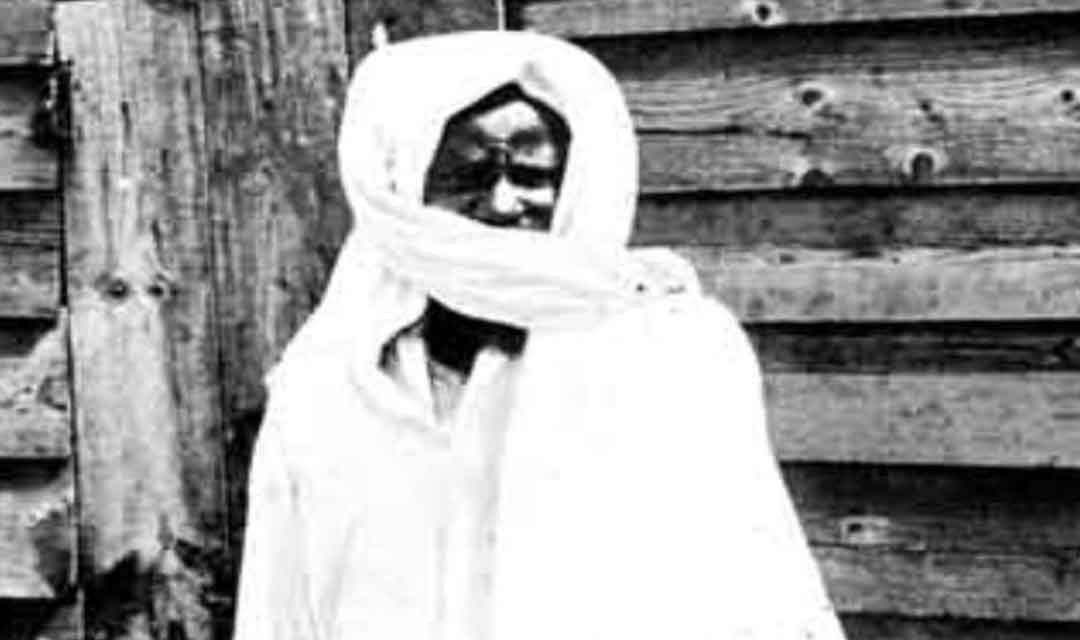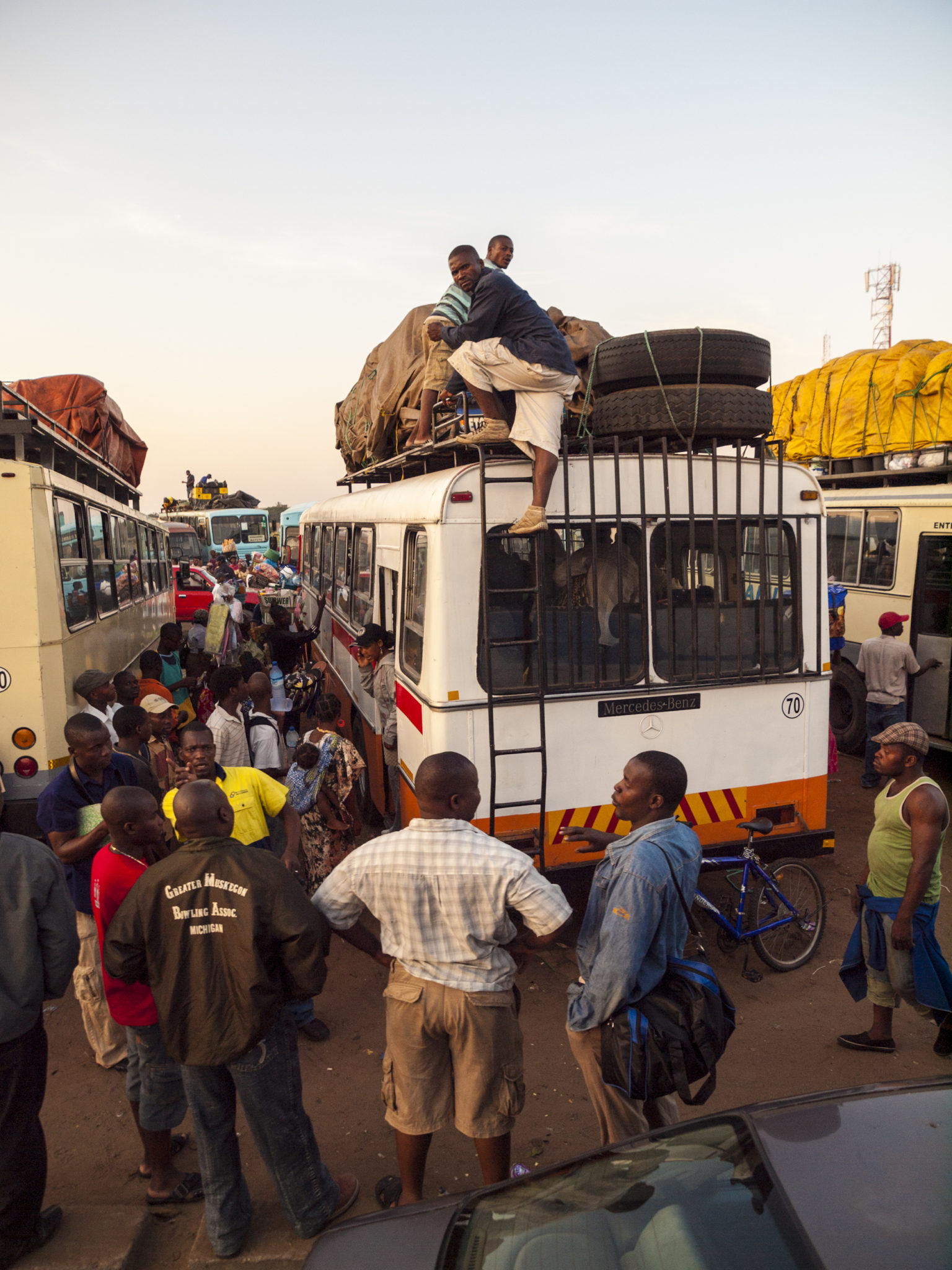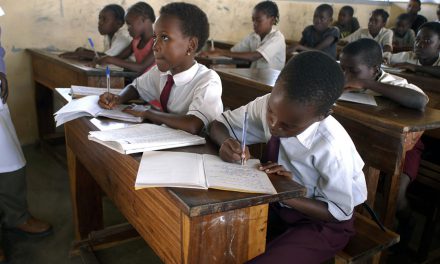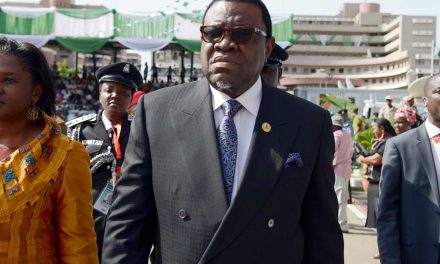Senegal: Mouridism and identity
The Mourides, who represent a black Senegalese version of Islam, have helped to inform nationalism in the country
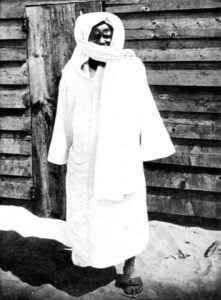
The only known photograph of Cheik Ahmadou
Bamba, probably taken before 1923.
Photo: SUPPLIED
Earlier this year I was sitting on the TGV high-speed train travelling across France listening to the BBC’s Africa Today podcast, which discussed the impact of the fire at Paris’s Notre-Dame cathedral on the African continent. The discussion outlined the idea that Notre- Dame represented not only a spiritual base for Catholics in Africa, but also a historical landmark of the spread of Catholicism to the continent. As such, it also had become a point of reference, particularly for Francophone African Catholics. Some African Catholics experienced the near destruction of Notre-Dame as the near destruction of their history and the origin of their faith in a physical and symbolic sense. The landmark had stood for centuries, and had become sacred by belief and ceremony, and a key part of religious foundational myth. Such foundational myths can powerfully inform personal and national identity.
We can explore this by looking at the Mourides of Senegal and the impact they have had in creating a Senegalese identity. The Mourides do not have as long a material history as African Catholics, nor can they claim a history of proselytising (which might be described as an explicitly colonial act). Moreover, their religious world view has overtly immaterial aspects. Thinking about this that day on the TGV, I asked myself how a religious sect such as the Mourides in Senegal, which has an explicitly immaterial outlook and a small material history, constructs a view of history that understands the “self” and the “other” and the interactions between them, and is able to influence and shape a national culture. For the Mourides have played an important role in the creation of the nation state of Senegal. They have created a history that is intertwined with the creation of Senegalese nationalism. That is, they created a history that expresses a specifically Senegalese, anti-colonial and black Afro-Islamic position.
Muslims of sub-Saharan Africa are often forgotten within the Ummah, or greater Islamic community. Many are neither Arab, nor Arabic speaking. Most are black African, and many practice different forms of Islam than people in the west might associate with the religion. To other Muslims, they can appear to exist in a limbo between African tradition and an Islamic modernity based within the nation state. According to writer Donal Cruise O’Brien, Mouridism bridges this gap with its idea that all are equal, regardless of wealth or prestige. Through its interactions with Senegal’s first president, Léopold Sédar Senghor, Mouridism was able to extend its ideas of equality and justice beyond itself, because the movement had a cultural grounding in a blackness, which resonated with Senghor’s black African take on Islam. It was also egalitarian in orientation, which suited Senghor’s belief in Afro-socialism. The founder of Mouridism, Cheikh Ahmadou Bamba, is known as the man who “said no” to the French when Senegal was still a French colony.
The story goes that he was summoned to the then capital, Saint Louis, and ordered to renounce teaching Islam or face exile. He refused and proceeded to pray in the governor’s office – but praying only two rakas (the sets of ritual movements Muslims use when praying to God). Normally, a Muslim will pray three or four rakas. The shorter prayer session signified that Bamba felt he was in enemy territory. The idea is that a reduced time of prayer increases the time available to defend oneself. Whether the French colonialists picked up on the symbolism of this or not, we will never know. But in this moment Bamba demonstrated both his knowledge of his Islamic faith and his self-assurance regarding his black identity. In this moment, Mouride history coincided with black nationalism. It is this spirit that Senghor often invoked in his own pieces on African identity and being. The result of this encounter was Bamba’s exile, first to Gabon and then to Mauritania, for refusing to renounce his role as a teacher of Islam.
This act of defiance is nowadays celebrated in the Magal (or religious festival celebrating a particular religious leader) of the Two Rakas, which started in 1980. The story illustrates how the Mouride Brotherhood constructed a material history from immaterial beginnings. A Saint Louis schoolteacher started the magal, and after much soliciting, and supposedly with some reluctance, the Khalifa-Générale (the chief Mouride and leader of the Brotherhood since Bamba’s death) gave his approval. The magal is innovative in the sense that it takes its inspiration from religious and secular sources. It is thus about remembering a specific political act that Bamba, as the founder of the Islamic brotherhood, undertook as an act of defiance against white colonialists. The date of the magal, 5 September, is calculated by the Gregorian calendar, not the Islamic one. The event includes academic lectures on themes such as “Bamba and the Qur’an”, while also incorporating more traditional elements such as khasside (recitations of devotional poems written by Bamba), dhikr (devotional prayers), large meals and pilgrimages to the colonial office where the act of defiance supposedly took place.
The festival, then, is syncretic in that it brings different ideas together. It is a celebration not just of religion, but of blackness, of anti-colonialism, and of academic debate within this historical context. Its specifically anti-western cultural point of view highlights the power of blackness and Senegalese identity. This is particularly poignant when considering the religious and societal environment around the time of its founding. Marabouts (or West African Islamic leaders) and politicians were known to be working together, often in very close relationships. Institutional bribery and corruption were common. The Khalifa- Générale would issue an Ndiggal (or fatwa) to ensure the ruling socialist party was reelected. Anyone who failed to carry it out would, technically speaking, cease to be a Mouride. Aside from their involvement in institutional corruption, some marabouts claimed to have magical powers, entrenching their followers’ beliefs in ideas of magic, not scripture.
A classic example was the marabout who claimed he could drink whisky because it turned to milk in his stomach. This meant that it did not make him drunk, and his action remained halal. However, educated intellectuals in Dakar scorned the unlearned marabouts’ claims to magical abilities. This all changed when Abdou Lahatte Mbacké became Khalifa-Générale. He banned the use of tobacco and alcohol in the Mourides’ holy city of Touba, and urged a return to a simple lifestyle based upon the farming of millet rather than peanuts, and to the simple pleasures of Mouride and Senegalese tradition. Though the magal of the two raka was first organised as a religious and academic event, this occurred outside of entrenched power systems. The magal therefore became a symbol of religious and societal reform based on what had once made Mouridism individual: a real sense of black and African power going beyond a rejection of colonial narratives and involving the creation of new narratives based on social and political critique.
The Mouride movement also rejects subordination to the Arabic Ummah – unlike the other two main Sufi brotherhoods in Senegal, which look to Fes and Baghdad for guidance. It, therefore, also celebrates the capacity of les noires to create their own philosophical paradigm, one which is proud of its differences. Narratives that emphasise taking pride in one’s identity and history play a role in Senegalese politics. Senghor’s secularism was based on the ideas of justice and equality as represented within Islam and Christianity, but with the religions in question functioning on a higher level of spirituality. As a Christian ruling a majority Muslim country, Senghor had to walk a tightrope between the two religions. In Senghor’s vision, the state’s role was therefore the champion of justice and equality between peoples and religions. The new state of Senegal’s rhetoric and policies would be based on aiming at the achievement of universal justice and equality – “a brotherhood of man” in Senghor’s words – as a secular idea informed by religion.
The aim of creating a brotherhood of man is now deeply ingrained in Senegalese society. Ideas of religion and religious duty are not overtly incorporated into the political narrative because they are understood as given. Instead, these are represented within the themes of nationalism. This makes politics the instrument that allows the creation of heaven on earth. In 1963, when Senghor opened the Great Mosque of Touba – the most important Mouride mosque and, according to some, the biggest mosque in sub-Saharan Africa – he proclaimed that a building of such glory represented the spiritual and material greatness of Senegal. It was built by unpaid Mouride volunteers and took over 30 years to complete. In the case of the Great Mosque, immaterial religious gestures helped to shape political realities. By projecting the Great Mosque as a nationalist symbol of Senegalese greatness, Senghor suggested that prayer was not only about devotion to one’s own god, but about creating a shared, universal justice and equality.
Through Senghor, the Mourides, who represent a black Senegalese version of Islam, have helped to inform Senegalese nationalism. Many Senegalese consider Bamba to be as important a national hero as Senghor himself, or Lat Dior, the Wolof king who fought off the first wave of French colonialism. A story that is told about Bamba illustrates this. While on the ship that was taking him to exile in Gabon, it is said that Bamba wanted to pray but the captain of the ship would not allow it. Bamba is said to have laid his sheepskin prayer mat down on the ocean and to have prayed on it as if on land. This miracle is recited across Senegal as evidence of Bamba’s Baraka (spiritual energy), while pictures of it can be found everywhere. The French colonialists allowed Bamba to return to Senegal in the later years of his life, realising that exiling him caused more problems than it solved. Bamba was a pacifist, claiming his only weapon was his pen, and this is a common element of the Senegalese identity nowadays.
Respect of origin, identity and religion are mutual, sect is not important, and beliefs are enquired about, not questioned or rebutted. The pacifistic element in both Bamba and Senghor’s thought is another element that connects them and is therefore probably why it features so strongly in the Senegalese national consciousness. This national consciousness is often seen in the artwork of Senegalese artists, mainly done on glass. These paintings often depict Bamba himself; contrary to Salafist Islam, Sufism does not discourage the representation of human figures, but sees it as an act of worship. Depictions of leaders are regarded as carrying their baraka; touching a photo or painting of Bamba confers his power and blessing. These paintings often involve the colours of Senegal, or the outline of Africa, alongside the figures of Bamba and of the Great Mosque of Touba. They combine nationalism, religion, and race and Mouridism – all within one piece of art.
In some paintings Bamba’s figure emerges from the middle “L” of the word “Allah” written in Arabic, as if the saviour of Africa, Senegal and Islam were emerging from the heart of Allah. As an icon, Bamba crosses historical boundaries and permeates his blessings into an understanding of faith that goes beyond devotion, moving into politics and interacting with values of a universalist appeal. Stories of the past, his actions and the interaction of spiritual images with Sufism come together to create a materialistic history based on interpretations of these values and morals, not just by politicians and marabouts but by disciples too, making them about personal interactions of equality, not just inaccessible scripture. Mouridism’s influence on the state and the creation of a national consciousness includes the Baye Fall and what they represent. A sub-sect of Mouridism, disciples of Baye Fall follow the example of Cheikh Ibra Fall, Bamba’s first and most devoted disciple. This includes the disavowal of all materialism and the embrace of hard labour as the highest form of prayer.
From one point of view, this could be said to be akin to the Protestant work ethic that Marx and Weber observed, but there is more to it than this. Baye Fallism involves the idea that sacrifice through hard work creates equality among men on earth as well as before god, meaning that all achieve heaven in the same way, no matter their socio-economic position. Baye Fall traditionally wear clothing made out of scraps and do not cut their hair, which results in long dreadlocks. Their aesthetic resembles that of Rastafarians, who believe that they will one day return to Africa, the promised land, but for the Mourides their home and spiritual land is, very specifically, the city of Touba. There, Baye Fall function as members of the police, or as labourers or as administrators of religious schools. The image of Bamba and the Baye Fall as a blacknationalist symbol therefore has an impact beyond Senegal. Bamba is seen not just as the saviour of Senegal, but of Africa, and the gateway to return to Africa for those who have moved away.
Through the use of aesthetics, politics and spiritual relations with the state, Mouridism has created its own history and at the same time contributed to Senegalese consciousness. This originates in the figure and actions of Bamba himself, who created a material history that is based not only on the overt materialism of buildings (such as the Great Mosque) and their spirituality, but also on a historical account interwoven with political and religious philosophy that gives power to the community and the nation. Bamba is thought not only to save Senegal, but all of Africa from the problems of social and political injustice that it faces. That this internalisation took place in Senegal was due partly to the way that Senghor constructed a multi-confessional state. But it was also due to the presence of Mouridism: an indigenous, black African approach to the religion of Islam.

